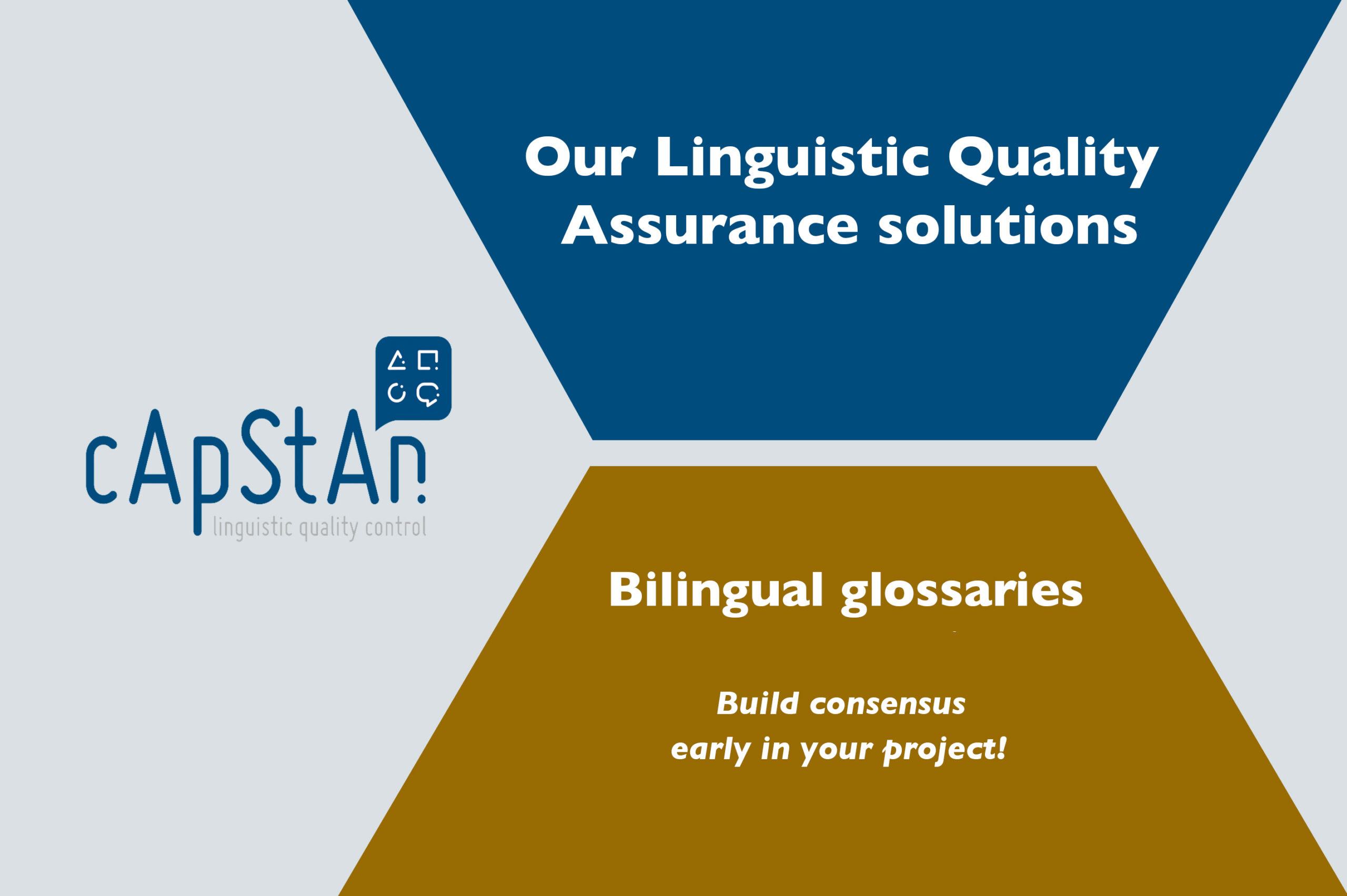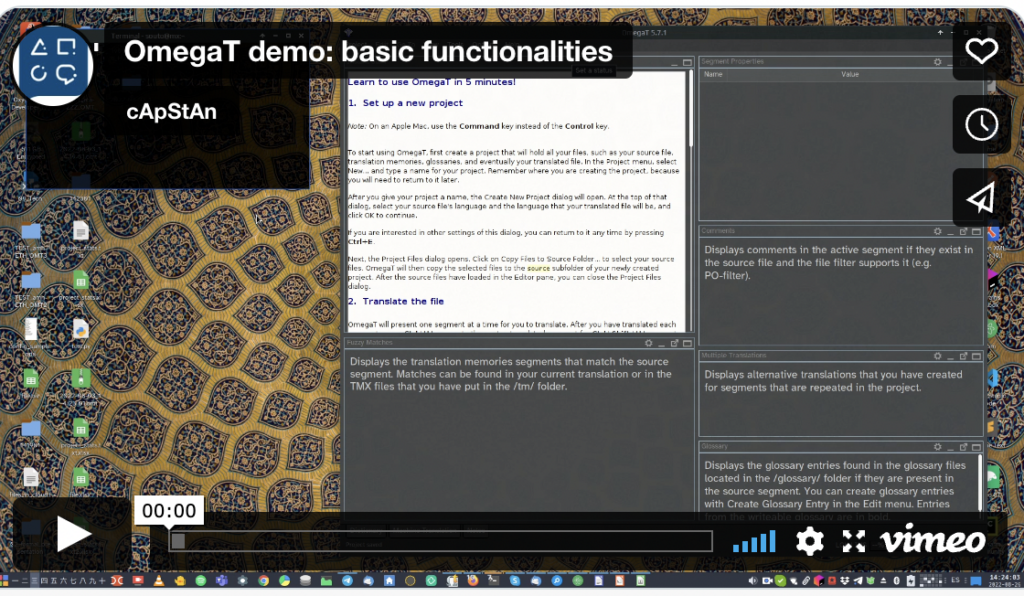
The role of glossaries in ensuring the validity and equivalence of tests/surveys across multiple languages
At cApStAn we strongly believe in the need to perform more “upstream” quality assurance work to reduce the need for “downstream” corrective action. In cApStAn’s modular approach, the creation of glossaries comes under module B, related to the preparation of a translation project. A glossary consists of a collection of terms that need to be translated consistently in order to ensure the validity and equivalence of a test or survey across multiple languages. cApStAn uses a combination of term extraction software and human expertise to compile a list of terms and expressions from the source-language documents. Glossaries are discussed and agreed within the translation team and need to be validated by the client. Existing glossaries can also be incorporated into this process. Glossaries can be created for a particular client or even for a specific project for a client.
Five good reasons why you should be using glossaries
- To increase consistency, often a core element of translation quality, or, in other words, reduce the chances for inconsistent terminology in the target text;
- To increase the productivity of translators, because if a term pair is in the glossary, they do not need to do research about that specific term unit, they can insert it in a fraction of the time of what it would take to type it, and they will make no typos;
- To increase productivity of revisers, for the same reasons as translators, and because they can use the glossary adherence check (included in the QA checks of the CAT tool and in VeryFire) to catch inconsistency errors that the translator might have introduced;
- To decrease turnaround time, thanks to the increase in productivity;
- In the long run, to achieve savings, because of the lower need to update texts if errors are found after publication.
Content of a glossary
- Terms and words that need to be translated consistently (technical concepts, cultural entities, etc.)
- Fictitious names, acronyms
- Terms or expressions that involve some research, that can be translated in more than one way
- Recurring expressions
- Names of months and days (including in abbreviated form)
- Names of questionnaire sections or modules
- Names of buttons, tables and other UI elements
How we create glossaries
- Step 1: cApStAn extracts terms from the source-language documents and inserts them in an excel sheet with their definitions;
- Step 2: The client validates the terms and expressions and their respective definitions in the source language;
- Step 3: cApStan finds the target-language equivalent of a term in the required languages;
- Step 4: Once the bilingual glossary is validated by the client, it is then uploaded on MemoryLn, cApStAn’s in-house glossary and translation memory repository and lookup tool (see below);
- Step 5: Before the translations begin, it is possible to set up automated rules to check adherence to the glossary at the translation verification stage.
- Step 6: Glossaries and translation memories are updated in MemoryLn and the client will be able to access the content for future projects as well.
How this works in practice
The glossary can be added to the translation project so that, during the translation task, any occurrence of a term listed in it will be highlighted and the translation that is in the glossary will be suggested and available for automatic insertion if appropriate in that context.
Use for completed projects
MemoryLn can be updated with bilingual glossaries and translation memories exported from completed projects. To run a search you simply enter your search expression(s) and select the appropriate parameters (source and target languages, project name, domain, etc.).
See also our article titled “Multilingual Surveys: “Five cost-effective steps to improve your questionnaire before translation begins” at this link
Check out this video at minutes 6:03 up to 8:42 for a recorded demonstration of how a glossary works.

Contact us for more information about our Linguistic Quality Assurance solutions!